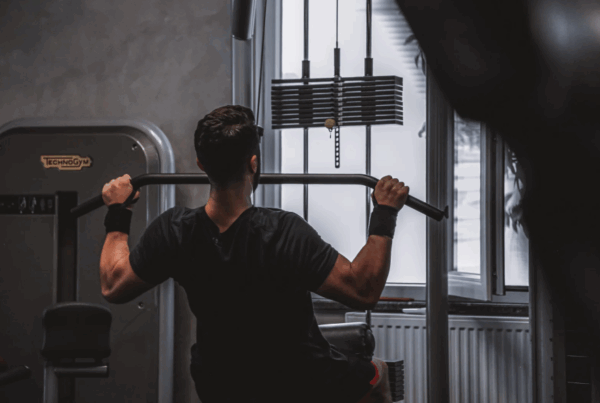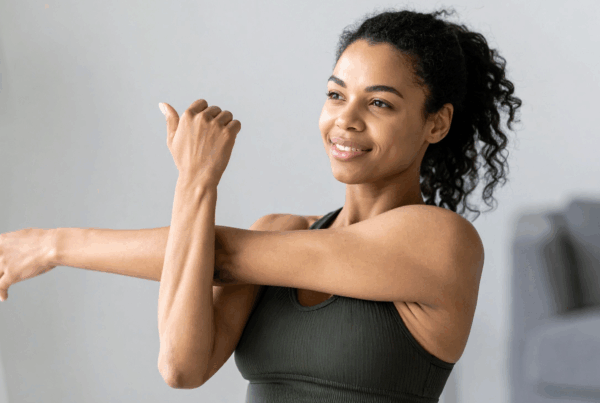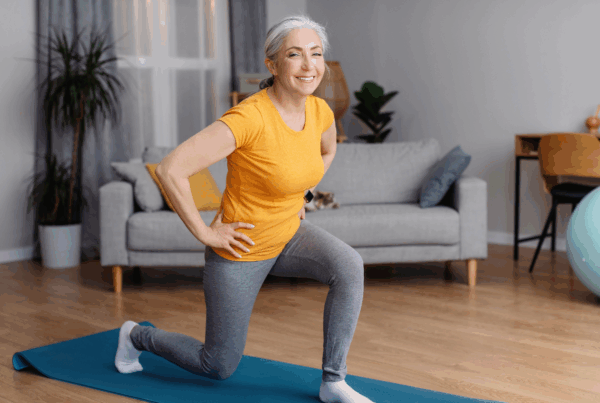 Your Question:
Your Question:
“Who would you suggest I should see to improve my overall posture?
I think it has worsened since I gained weight.
And is it going to be something I’ll need to be consistent on training with? Because I suck at that.”
(Repost from July 2020)
Our Answer
Great question and thanks for sending it in! It’s also handy for us and hopefully our other readers, because our sister company Reva Wellness has a lot of articles we can put all in one place.
There is A LOT to consider in your question, especially with your last, honest, comment!
Let’s break it down…
Who would you suggest I should see to improve my overall posture?
The first thing that comes to my mind is “no one.” I wouldn’t recommend you see any particular health professional, especially one involving hands-on treatment such as massage or joint manipulation because like you’ve already guessed, it’s something that you need to “train.” No one can do that for you.
Instead, I’m going to give you a list of things you can choose to do.
That said, if you do require some face to face guidance opposed to a blog and videos, you could see an Exercise Scientist, Exercise Physiologist, Physiotherapist, Massage Therapist, Osteopath or Personal Trainer. I would obviously recommend an Exercise Physiologist who would have had extensive education in biomechanics and chronic injuries.
Depending on how bad your posture is or if you have any underlying recent injuries, a physio may be the best choice here. They may elect to provide strapping as well. Personally, I would recommend a physio with an exercise science background, as they usually have a heavier focus on exercise prescription as opposed to hands-on treatment. Some osteopaths also have a large exercise focus.
But like any profession, there are good ones and not-so-good ones out there, so it may be worth your time to do a little bit of background checking into their education, experience and reviews.
You could also consider joining a regular yoga class or work one-on-one with a yoga instructor.
Body Weight
If you think your posture has worsened due to weight gain, reversing this may therefore assist.
If that is an avenue you’re wishing to explore, that’s probably a whole other article. But, a starting point is to aim for some simple changes you can make to achieve a healthy diet and activity level:
- Cut out added sugar
- Cut back on alcohol
- Aim for 5+ servings of vegetables per day and 2 serves of fruit. Plus a bit of protein. When you achieve this is actually hard to fit in the extras!
- Achieve the minimum recommended activity levels (30 minutes of exercise, 5 days per week)
- Get in 7,000-10,000 steps per day
Do I have to be consistent?
Yes.
Posture and poor posture alike, are a result of consistency. You’ve been consistent with your poor posture, that’s why it’s there. So, the only way to improve it is to do the opposite.
There are a few things we can do though, to support your consistency:
#1 Make it a habit.
Make some time for yourself to schedule a regular time to do some exercises and brainstorm some ideas around barriers you foresee getting in the way.
The easiest thing to do is, is to add it to what you’re already doing, even if it’s not related to what to the goal, for example, do some stretches while you’re on the phone. This helps because adding habits to already existing behaviours can be cues for you to remember to do them!
You can check out some habit-building tips here.
#2 Explore your why
Why is improving your posture important to you? Do you want to manage pain, do you want to improve flexibility, or do you want to feel more confident or attractive?
Write down your why.
How important is it to you? Obviously enough to reach out and ask how! So, you’ve taken the first step! Ideally, for behaviour change, we like to have an importance level of 8/10.
Then rate your confidence level. If that is less than 8/10, you may need extra support from a health or fitness professional.
Reva Wellness has some more goal setting tips here and here.
How to improve your posture
Posture can often be an interplay of tight, weak and lengthened muscles – there are other causes such as arthritis, although our recommendations would probably help that too, but if you have an underlying condition it is important to attend a few supervised sessions with your health professional.
We can address these muscle interplays with some posture specific stretches and neck exercises, which you can each daily, and some other strengthening exercises (The 3 Most Important Exercises For People Who Sit All Day) that you should do 2-3 times per week.
Self-massage techniques will help too. You can follow our social media pages to find examples of these. The most effective protocol is self-massage → stretch → strengthen.
It is also essential to make sure your workspace is set up ergonomically, check out these articles: Permission to sit at your desk, and Why we like standing desks.
No matter how good your posture is at work it is important to have little breaks from the postures you hold, whether this is at a computer or in a factory. The further your work postures are from the ergonomic standard, the more frequently you should change your posture through a break, walk or some quick exercises.
Throughout the day could also help with your posture, you can just get up and move or if you’re stuck for ideas you can follow this video.
But, as mentioned, you do need to be consistent and this means it is sort of a whole-day training with constant reminders and adjustments. Sit in front of a mirror, set timers and ask friends to give you a gentle reminder tap.
Because my answer is getting too long, with links all over the place, I’ll stop waffling on and just provide you with a checklist to follow that our sister company over at Reva Wellness have created.
| Posture Improvement Checklist |
Take photos or height measurements so you can keep track of improvements, as they are likely to be small; you wouldn’t to miss them and get disheartened. Even if you don’t notice observable posture improvements, your body will thank you for the extra strength and mobility!
A comment on assistive devices
There are various external supports such as taping, band strapping and devices that measure you slouching and send you a reminder to sit up. You can discuss taping with a physiotherapist. The resisted strapping and the constant reminders have the potential to assist but also a risk of increasing muscle fatigue and leading to increased discomfort or pain.
Activity monitor wrist bands or pedometer apps are another great tool to remind you to move and give your desk posture a break.
Goodluck!
Biara Webster
Exercise Physiologist and Writer/Content Manager, Specialised Health








